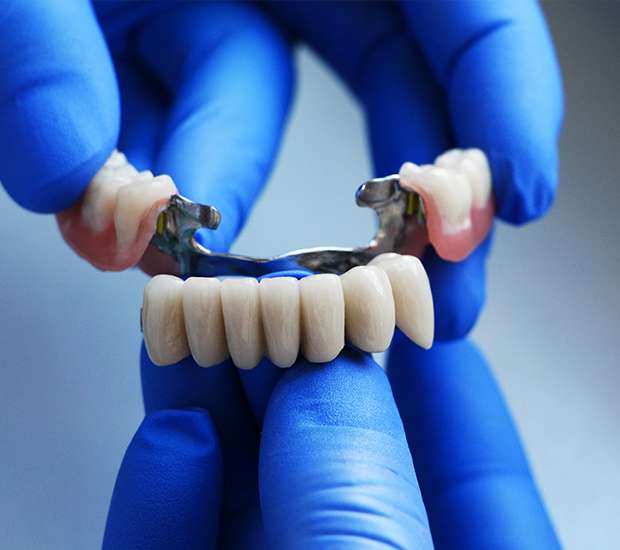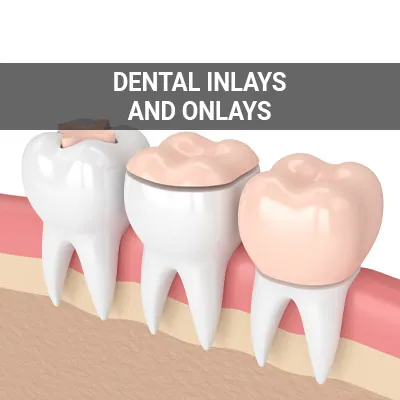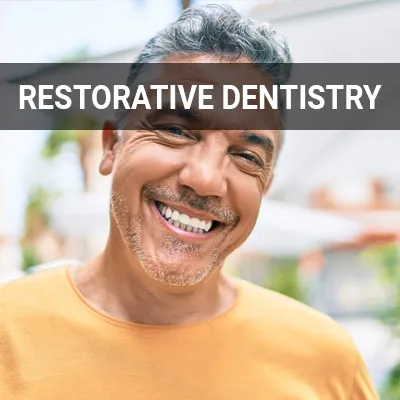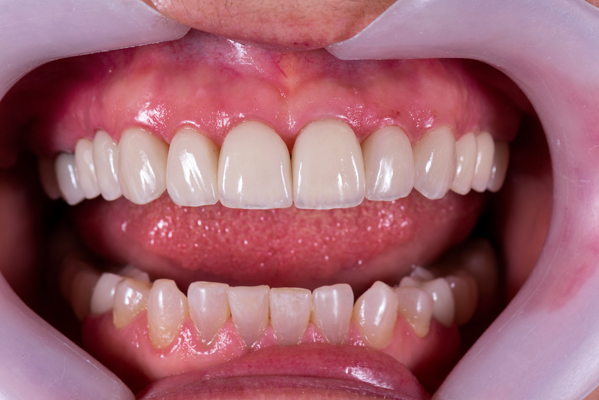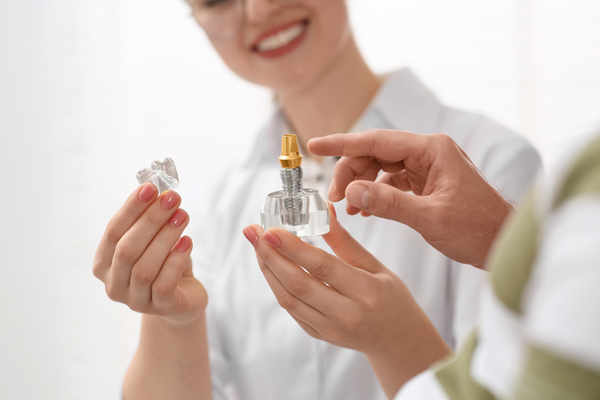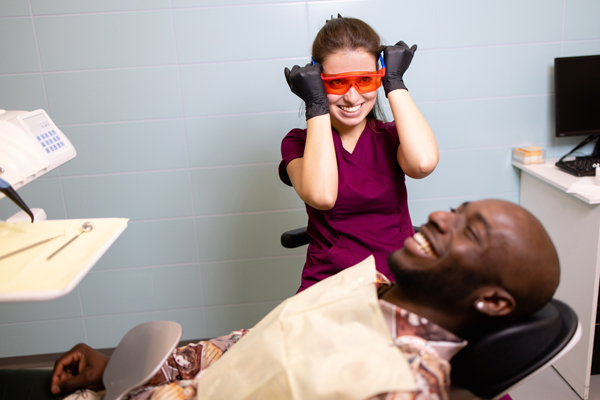Dental Bridges Livermore, CA
A dental bridge is a tooth replacement option that consists of artificial teeth attached to a frame that can be fit onto a crown over abutting natural teeth or implants. Many patients may consider a dental bridge among other teeth replacement options. The right choice may come down to an option that offers comfort and a natural appearance, which is why many patients choose dental bridges.
At Livermore Dental Spa, we offer dental bridges to patients in Livermore and the surrounding area. After a thorough evaluation and review of medical records, our dentist explains available teeth replacement options and makes recommendations for an optimal treatment plan. We work with top dental labs to create dental bridges that fit well and look good.
Replacing missing teeth is not just a cosmetic matter. It is essential to good overall health to have a full mouth of adequately functioning teeth. Call us at (925) 344-3993 to make an appointment and learn how our dentists can help.
Understanding What a Dental Bridge Can Do for You
A dental bridge is a partial set of replacement teeth, usually made from porcelain that looks and feels like natural teeth. There are several types of dental bridges, but most connect to the abutting natural teeth to hold them in place. This helps prevent the rotating and shifting that can be brought on by gaps in the mouth left by missing teeth. Bridge work is typically designed to be a permanent addition to the mouth and is not removable. Dental bridges require healthy surrounding teeth or implants to have enough bone support.
With proper care, dental bridges can last for close to ten years. Dentists recommend patients brush and least twice daily using a soft-bristled toothbrush. It is important to floss daily around the teeth and bridge and use an antiseptic mouth rinse. Your dentist may recommend a proxabrush to clean under your bridge. Patients who have bridgework are also advised to avoid tobacco products and hard sticky items like caramel.
“A dental bridge is a partial set of replacement teeth, usually made from porcelain that looks and feels like natural teeth.”
Candidates for Dental Bridges
To receive a dental bridge, the patient needs to have some remaining natural teeth. In general, dental bridges are appropriate for cases of one or a few missing teeth. If the patient is missing a large portion of the arch, another treatment may be preferable.During a consultation, we can go over possible options and see which one will be most effective for the patient.
Since it can take up to six months for the gum to heal completely, an individual may experience a delay in receiving a dental bridge. Additionally, a bridge may not be an option if there are insufficient bone and tooth matter to support it. Livermore Dental Spa can evaluate whether a patient is a candidate for this treatment. In some cases, a dental bridge may only be part of a treatment plan or smile makeover.
“In general, dental bridges are appropriate for cases of one or a few missing teeth.”
Dental Bridge Types
There are four major types of dental bridges. Three of them use different mechanisms to attach to the abutting teeth. The fourth type connects to the jawbone via an implant.
- Traditional. A traditional bridge is a combination of one or more replacement teeth with crowns on either side. It is necessary to grind down the abutment teeth slightly. The crowns are placed over the natural teeth and cemented in place.
- Cantilever. This is similar to a traditional bridge but used when there is only a single abutment tooth. It uses a cantilever design to secure the bridge in place from a single point.
- Maryland. The Maryland dental bridge also connects to the adjacent teeth. However, it has a metal framework that bonds to the inside of the natural teeth with resin, avoiding the need for crowns on the abutment teeth.
- Implant-Supported. Some bridges are implant-supported. They connect directly to the jawbone with dental implants, small metal studs that replicate natural tooth roots. Typically, there is one implant placed per replacement tooth.
“There are four major types of dental bridges.”
Check out what others are saying about our dental services on Yelp: Dental Bridges in Livermore, CA
Bridges v. Dentures
Although bridges and dentures both act as tooth replacements, there are some differences and similarities between the two. One of the main differences between a dental bridge and dentures is that bridges are a fixed appliance, whereas dentures can be either fixed or removable. Another difference is that fixed dentures require dental implants, while fixed bridges can be placed without implants.
Bridges and fixed dentures are similar in that they both look and feel like natural teeth. They both share the benefit of being strong, durable, and long-lasting. In most cases, patients are able to choose between the two. However, certain cases may require one or the other due to the patient's oral status or any dental conditions or complications.
“Bridges and fixed dentures are similar in that they both look and feel like natural teeth.”
Questions Answered on This Page
Q. Am I a good candidate for a dental bridge?
Q. What are the different types of dental bridges?
Q. What is the difference between a dental bridge and dentures?
Q. What does getting a dental bridge entail?
People Also Ask
Q. What is involved in getting a fixed bridge?
Q. When is a dental restoration necessary?
Q. Who are the right candidates for teeth replacement?
Q. Can dental bridges replace my missing teeth and restore my smile?
Q. What is entailed in the process before getting a dental crown?
The Process of Getting a Dental Bridges
Receiving a bridge typically takes several appointments. If there are not already crowns on the abutting teeth, the dentist must shape them to prepare for crown placement. The dentist will also check the health of the gums and the abutting teeth. Any problems in these areas, such as decay or gum disease, will need to be addressed before placing the bridge. If implants are required to support the bridge, the process of placing them will need to happen first.
Our dentist will take impressions of the mouth and place a temporary bridge while a dental lab is preparing the permanent one. Several appointments may be necessary to finetune the fit of the bridge. We may attach it with temporary dental cement and avoid placing it permanently until we achieve the right fit.
“Our dentist will take impressions of the mouth and place a temporary bridge while a dental lab is preparing the permanent one.”
Frequently Asked Questions
Q. How is a dental bridge different from dentures?
A. Dentures require removal every day, while a bridge stays in the mouth permanently for the duration of its lifespan. On the one hand, bridges tend to offer a better fit and a more natural feeling. On the other hand, fitting the dentures does not require additional procedures such as a crown or implant placement.
Q. How long can I expect my dental bridge to last?
A. Dental bridges usually last between 10 and 15 years. Taking good care of the bridge and seeing a dentist on a regular basis can extend this period further.
Q. Is it normal to have tooth sensitivity after getting a dental bridge?
A. Tooth sensitivity is common after bridge placement. It usually goes away after a few weeks. In the meantime, it can help to avoid very hot or cold foods. The American Dental Association also recommends limiting acids, which can be in some types of mouthwash. Ask a dentist about alternative products.
Q. When do I need to see a dentist about problems with my dental bridge?
A. Some discomfort immediately after placement is usually normal; however, contact a dentist if pain or sensitivity persists or worsens. Damage to the bridge or crowns also needs prompt, professional attention.
Q. Why does my dental bridge keep coming loose?
A. If a dental bridge keeps loosening or falling out, the most common reason is decay in the supporting teeth. Other causes could include gum disease. Whatever the reason, a loose bridge is an important reason to call our office right away.
Dental Terminology
Helpful Related Links
- American Dental Association (ADA). Glossary of Dental Clinical Terms. 2024
- American Academy of Cosmetic Dentistry® (AACD). Home Page. 2024
- WebMD. WebMD’s Oral Care Guide. 2024
About our business, license, and website security
- Livermore Dental Spa was established in 2023.
- We accept the following payment methods: American Express, Cash, Discover, MasterCard, and Visa
- We serve patients from the following counties: Alameda County, Contra Costa County and San Joaquin County
- We serve patients from the following cities: Livermore, Alameda, Pleasanton, Dublin, Ulmar, Tracy, San Ramon, Danville, Mountain House and Castro Valley
- CA (License #101519). View License Information and Specifics
- National Provider Identifier Database (1679095681). View NPI Registry Information
- Healthgrades. View Background Information and Reviews
- Norton Safe Web. View Details
- Trend Micro Site Safety Center. View Details
Back to top of Dental Bridges
